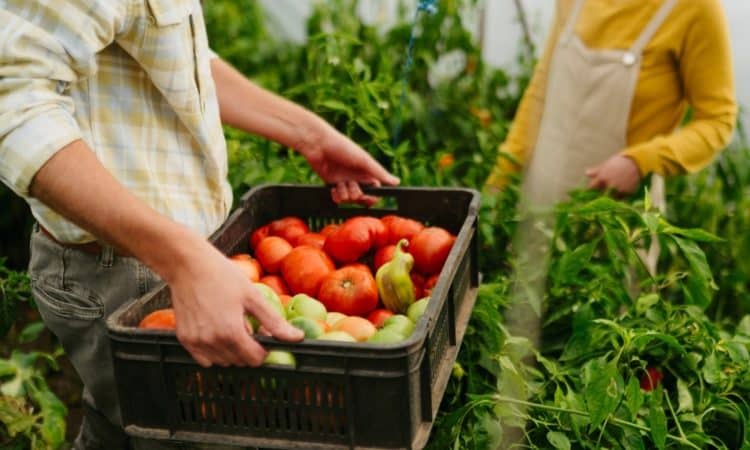
The active growth phase usually begins in midsummer. It is advisable that during this period the garden crop receives an important fertilization. By proper fertilization in July, the gardener will achieve two positive results at once.
First, thanks to the nutrients supplied, the fruit will ripen faster. Secondly, their yield will increase significantly. Thirdly, the taste of the tomatoes will improve.
Super fertilizer for tomatoes in July
Take a bucket, fill it with plain water (leaving some free space) and add potassium sulphate and ash. As for the first component, one tablespoon is enough. But you will need a larger amount – one cup. Mix the contents of the container thoroughly.
The result will be a liquid with which to nourish the tomatoes. Each tomato bush should receive one quart of the prepared product. As a result of this fertilisation, the plant receives several important components at the same time: potassium, phosphorus, calcium, magnesium, etc. Nitrogen, which tomatoes do not need in midsummer, is absent from the fertiliser. In this way, no harm will be caused to the garden crop.
The use of this fertilizer will only lead to positive results: protection of tomatoes from diseases, accelerated ripening, increased yield.
Rules for fertilizing tomatoes
Tomatoes are often planted with the first bunch of flowers, but there’s no need to rush fertilizing. Wait 1-2 weeks. This time is needed for the seedlings to root in the new location. It is better to apply fertiliser when mass flowering starts.
Fertilizing tomatoes during flowering should include potassium. The job of this mineral is to redistribute nutrients that ensure active growth. However, due to the fact that when fertilizing with potassium, the leaves and stems lose nitrogen and phosphorus, it will be necessary to use the whole complex of elements. It is possible to add an ash fertilizer based on potassium, manure and nettle.
The appearance of flowers and spikes does not happen immediately, but as the stem grows. For this reason, for better fruit formation, you can use 2-3 feedings (this depends on the growing season and the length of the season).
At the stage of fruit formation, you can use organic matter such as an infusion of compost or manure dissolved in water. For each plant you will need 300 to 400 ml of solution. When the fruits are in the active growth phase, you can use an infusion of yeast with bone meal (consumption – 2 litres per plant). To prepare it, dissolve 50 g of bone meal and 1 sachet of yeast in 10 l of water.
During fruiting from mineral fertilizers you can use boron, which helps to increase the amount of sugars in tomatoes and increases the shelf life. Manganese is needed to increase productivity and is used to prevent fungal diseases.

